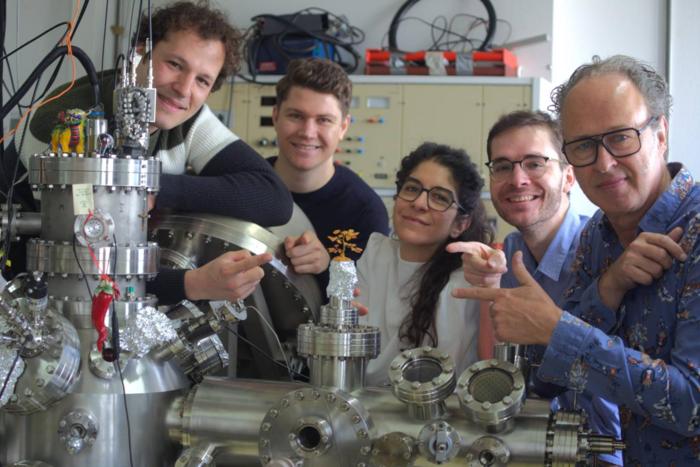
New method unravels the mystery of slow electrons
Electrons can behave very differently depending on how much energy they have. Whether you shoot an electron with high or low energy into a solid body determines which effects can be triggered. Electrons with low energy can be responsible for the development of cancer, for example, but conversely they can also be used to destroy tumors. They are also important in technology, for example for the production of tiny structures in microelectronics.

Credit: TU Wien
Electrons can behave very differently depending on how much energy they have. Whether you shoot an electron with high or low energy into a solid body determines which effects can be triggered. Electrons with low energy can be responsible for the development of cancer, for example, but conversely they can also be used to destroy tumors. They are also important in technology, for example for the production of tiny structures in microelectronics.
These slow electrons, however, are extremely difficult to measure. Knowledge about their behaviour in solid materials is limited, and often scientists can only rely on trial and error. However, TU Wien has now succeeded in obtaining valuable new information about the behaviour of these electrons: Fast electrons are used to generate slow electrons directly in the material. This allows details to be deciphered that were previously inaccessible experimentally. The method has now been presented in the journal ‘Physical Review Letters’.
Two types of electrons at the same time
“We are interested in what the slow electrons do inside a material, for example inside a crystal or inside a living cell,” says Prof Wolfgang Werner from the Institute of Applied Physics at TU Wien. “To find out, you would actually have to build a mini-laboratory directly in the material to be able to measure directly on site. But that’s not possible, of course.”
You can only measure electrons that come out of the material, but that doesn’t tell you where in the material they were released and what has happened to them since then. The team at TU Wien solved this problem with the help of fast electrons that penetrate the material and stimulate various processes there. For example, these fast electrons can disturb the balance between the positive and negative electrical charges of the material, which can then lead to another electron detaching itself from its place, travelling at a relatively low speed and in some cases escaping from the material.
The crucial step now is to measure these different electrons simultaneously: “On the one hand, we shoot an electron into the material and measure its energy when it leaves again. On the other hand, we also measure which slow electrons come out of the material at the same time.” And by combining this data, it is possible to obtain information that was previously inaccessible.
Not a wild cascade, but a series of collisions
The amount of energy that the fast electron has lost on its journey through the material provides information on how deeply it has penetrated the material. This in turn provides information about the depth at which the slower electrons were released from their place.
This data can now be used to calculate to what extent and in what way the slow electrons in the material release their energy. Numerical theories on this can be reliably validated for the first time using the data.
This led to a surprise: it was previously thought that the release of electrons in the material took place in a cascade: A fast electron enters the material and hits another electron, which is then ripped away from its place, causing two electrons to move. These two electrons would then remove two more electrons from their place, and so on. The new data show that this is not true: instead, the fast electron undergoes a series of collisions, but always retains a large part of its energy and only one comparatively slow electron is detached from its place in each of these interactions.
“Our new method offers opportunities in very different areas,” says Wolfgang Werner. “We can now finally investigate how the electrons release energy in their interaction with the material. It is precisely this energy that determines whether tumor cells can be destroyed in cancer therapy, for example, or whether the finest details of a semiconductor structure can be correctly formed in electron beam lithography.”
Journal
Physical Review Letters
DOI
10.1103/PhysRevLett.132.186203
Method of Research
Experimental study
Subject of Research
Not applicable
Article Title
Energy Dissipation of Fast Electrons in Polymethylmethacrylate: Toward a Universal Curve for Electron-Beam Attenuation in Solids between ∼ 0 eV and Relativistic Energies
Article Publication Date
1-May-2024